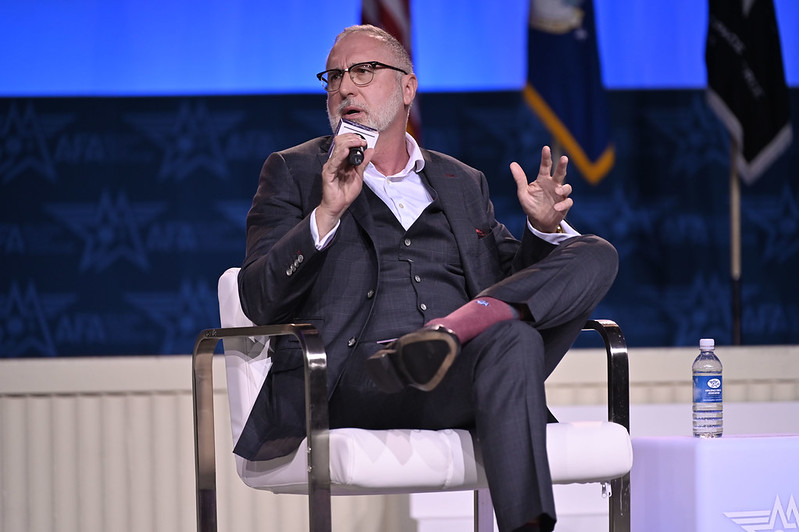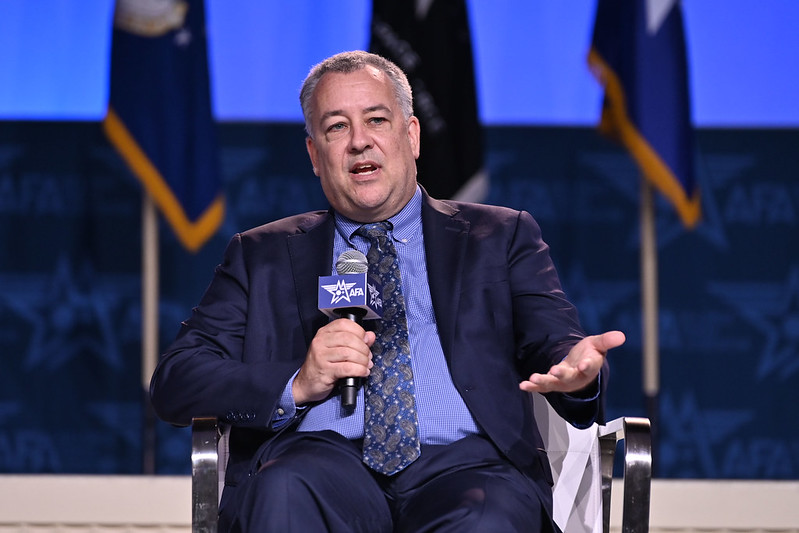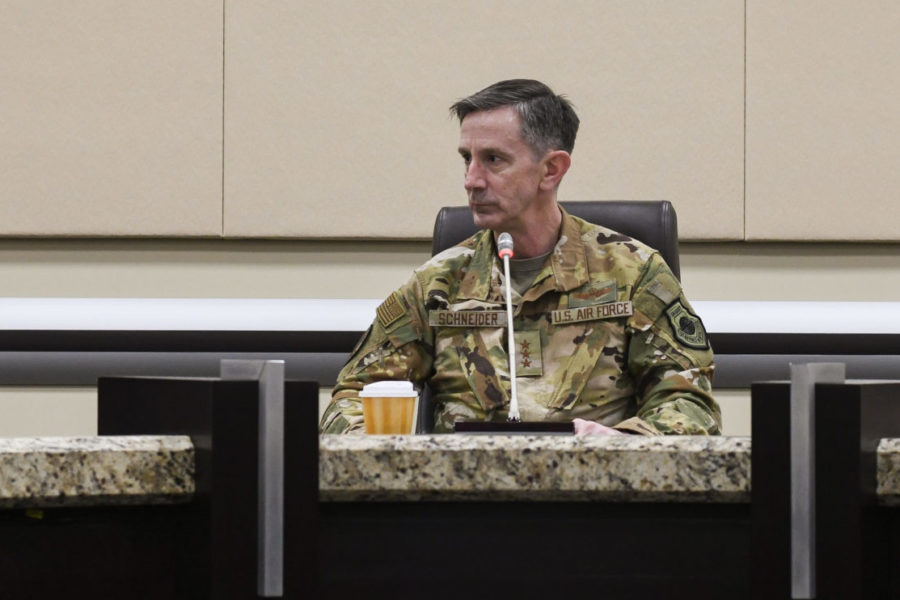NATIONAL HARBOR, Md.—Russia and China are ramping up their joint military operations, and the head of Pacific Air Forces is keeping a close watch, though he and other analysts noted limits to the two nations’ cooperation.
“It is unclear to me what their long-term goals and objectives are, other than to counter what the United States and allies and partners are doing,” PACAF commander Gen. Kevin B. Schneider told reporters at AFA’s Air, Space & Cyber Conference on Sept. 16. “We do continue to watch and see how they work together, and see if they are able to combine tactics, techniques, and procedures and to work more effectively as a force.”
Just last week, Russia announced a weeklong naval and air exercise involving some 120 aircraft and 400 naval vessels, with China adding its warships and planes to the mix. Beijing said the joint drills are meant to enhance strategic cooperation between the two countries and “strengthen their ability to jointly deal with security threats.”
The two nations have grown closer in recent years, particularly following Russia’s all-out invasion of Ukraine in 2022. In May, leaders Xi Jinping and Vladimir Putin pledged a “new era” of partnership, following Xi’s claim that the two nations are driving “changes” together. Experts believe this shared worldview is central to their relationship, with China seeking to learn from Russia as it eyes a potential invasion of Taiwan in the coming years.
“The interesting thing that has happened since Russia invaded Ukraine is that the PRC sees this as a blueprint for how they might expect the U.S. and the West to react to a Chinese invasion or military activity against Taiwan,” National Intelligence Manager for East Asia Wayne Ulman said during a panel discussion. “China has taken many steps over the last couple of years to harden its own economy and indigenize as much key technologies to create dependencies, from supply chains for key minerals to legacy chips. … And so, essentially, if the West tries to impose the same sort of sanctions that we did against Russia, we would be essentially cutting our own throats.”

The China-Russia partnership hit a new milestone in July when the two countries’ military aircraft simultaneously entered the Alaska Air Defense Identification Zone (ADIZ) in July, the first time Chinese H-6 bombers have flown in the area. The aircraft, which remained in international airspace, were intercepted by American and Canadian fighters off the coast of Alaska.
Also in July, shortly after NATO labeled China a key player in the Ukraine conflict, Beijing and Moscow conducted a joint naval exercise at the same military port in southern China. The Chinese defense ministry claimed that these drills were unrelated to international tensions and the exercises were to showcase their naval capabilities with anti-missile drills, sea strikes, and air defense.
However, Schneider noted that despite rising concerns regarding the ties between China and Russia, the top two threats identified in the U.S. National Defense Strategy, he sees “potential limits” to Beijing-Moscow cooperation in military exercises and believes it is too early to gauge their potential for closer alignment.
“It’s too early to draw conclusions on that, other than what I would describe it as more of a partnership of convenience, vice a deep-seated connection the way we have: a connection of values with our allies and partners,” Schneider said.

Other military leaders and China watchers echoed that view, noting that China’s relationship with Russia isn’t on par with Washington’s ties to its Pacific regional allies or NATO. Brendan Mulvaney, director of the China Aerospace Studies Institute at Air University, said the two countries’ defense collaboration is “far from an alliance,” at least so far.
“We’ve seen no real interoperability (between China and Russia).” Mulvaney said. “They continue to do something new, it is slow, and it is step by step, but it is continuing, and it is far more than they ever did, and we should expect to see more cooperation. However, it’s still a long way from an alliance, to the point where the People’s Liberation Army might show up in Ukraine.”


